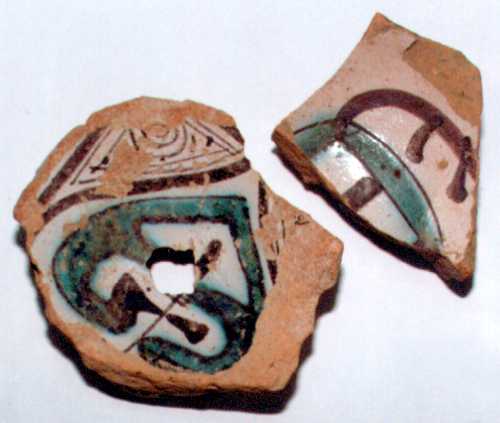|
| Glazed Plate Fragments Decorated in an Arab Technique, from Sesimbra Castle near Setúbal: 11th to 12th centuries AD |

The technique of painting clay vessels in several colours, then covering the decoration with a transparent lead glaze to create a hard, shining surface, was developed in China in Roman times and mastered by Arab potters. The spread of Islam across the Mediterranean during the second half of the first millennium AD brought these techniques to Portugal.
Ceramic plates, likewise, originated in the east and spread west across the Mediterranean with the Arab conquests.
Sesimbra Castle near Setúbal was an important stronghold in Islamic times, and its inmates would have served food from these beautiful plates, such as were scarcely known at the time in northern Europe. In England, slices of hard or stale bread served as plates for most people; the wealthier had wooden, or perhaps rare pewter, plates.
Sesimbra lies on the southern coast of the Arribida peninsula just west of Setúbal and the mouth of the Sado river. During the Moslem reign, a construction was built here to protect the local farmers. When the first king of Portugal, King Alfonso Henriques, conquered the area in 1147 AD, a small battalion of Portuguese soldiers was stationed here.
© 1998 Oxfordshire Museum Service, Setúbal Museums and the Benaki Museum